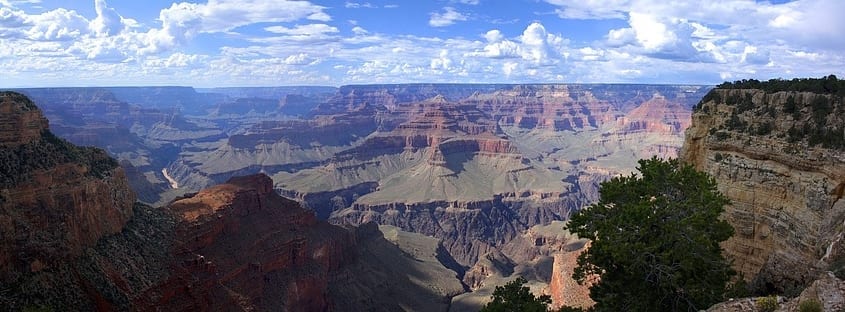Should More National Parks Ban Disposable Water Bottles?
 At their height of popularity, disposable water bottle waste made up a whopping 20% of all waste generated by the Grand Canyon’s visitors on the South Rim. Not only is that a huge portion of needless waste, but it’s all plastic, something that takes decades to break down naturally. Understandably, the Grand Canyon National Park banned the sale of all disposable water bottles back in 2012, following a wave of over 20 national parks across the country that have been banning disposable water bottles since 2011. If you look at things on a grander scale, the water bottle problem becomes even more pronounced, comprising 30% of national park waste nationwide.
At their height of popularity, disposable water bottle waste made up a whopping 20% of all waste generated by the Grand Canyon’s visitors on the South Rim. Not only is that a huge portion of needless waste, but it’s all plastic, something that takes decades to break down naturally. Understandably, the Grand Canyon National Park banned the sale of all disposable water bottles back in 2012, following a wave of over 20 national parks across the country that have been banning disposable water bottles since 2011. If you look at things on a grander scale, the water bottle problem becomes even more pronounced, comprising 30% of national park waste nationwide.
The International Bottled Water Association, a representative group fighting for over 200 bottling companies, has been taking steps to lift every national park water bottle ban in the country, with the association’s vice president, Chris Hogan, claiming, “This is a prominent, misleading attack on bottled water that has no justification.” The IBWA has some valid points, asserting that banning the sale of bottled water doesn’t reduce waste, and instead encourages families to turn to sugary sodas, increasing their risk of dehydration.
Supporting his claims is a recent study published in the American Journal of Public Health that examined the effects of students at the University of Vermont after the campus stopped selling bottled water. While that study found that the lack of water bottles led to a 30% increase of sugary drink sales, it doesn’t hold up as evidence in this situation. There are vast differences between a university in Vermont and a national park in Arizona, and data gathered at an actual national park after banning the sale of water bottles tells a very different story.
Zion National Park in Utah sees over 2.7 million visitors annually, and they were one of the first national parks to ban the sales of water bottles, instead offering guests the opportunity to buy a refillable water bottle that could be filled, for free, at one of many water stations along the park’s trails. “It’s misleading to say [the ban] pushes people to drink less healthy beverages—in reality they still get free water, and they can get a bottle just as cheap as most bottled waters,” says Alyssa Baltrus, a spokesperson for the park. The park estimates that it eliminates over 5,000 pounds of plastic waste annually thanks to the ban.
Despite the results seen at Zion National Park, the National Park Service acknowledges the concerns of the bottling industry. Maybe a blanket ban isn’t the option, but one thing is for certain: the IBWA stands to lose money if water bottles are banned at national parks, regardless of how these bans would impact visitors or the environment. With bottled water companies under fire for their ethics, the quality of their water, and their contributions to global warming, these bans still inhabit a grey area that needs to be clarified.
Where do you stand on the issues? Let us know in the comments section below, and call or click today for more information on trip planning, travel, local events, lodging, and more.

 https://pixabay.com/en/fresh-water-beer-colorado-river-263777/
https://pixabay.com/en/fresh-water-beer-colorado-river-263777/
 https://pixabay.com/en/grand-canyon-cloud-inversion-rare-2312268/
https://pixabay.com/en/grand-canyon-cloud-inversion-rare-2312268/